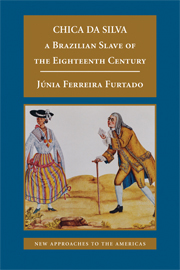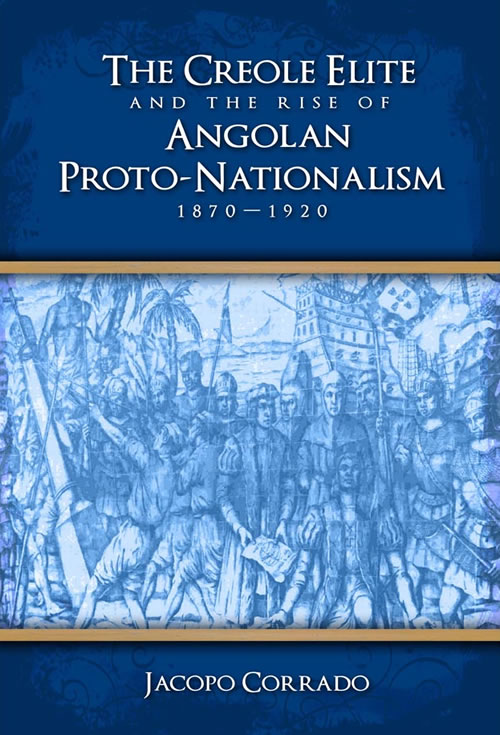The paper presents both the institutional background and the government philosophy regarding equality and non-prejudice within all of the territories under Portuguese sovereignty in the 1940s and 1950s, as well as tests carried out to discover if the decision to marry and racial homogamy could be considered independent variables, using annual data from statistical yearbooks relating to the colonies.
The conclusions demonstrate the existence of a social prejudice towards inter-racial marriage. The paper supports the belief that social divisions based on ethnicity must be included as part of the explanation for decolonization and independence.
The Government’s philosophy on cohesion during the last Portuguese Empire
In the last phase of the Portuguese empire (1930s-1974/5), the government’s political philosophy in relation to the colonial territories was based on considerable propaganda about the respectful relationship between the Portuguese and other peoples in their colonies. It is the aim of this study to describe the official Portuguese literature on these issues and check its accuracy for interpreting social interaction through marriage in the Portuguese colonial territories of the period.
In political speeches, Portugal was presented as a vast and great nation. Its domains and sovereignty spread over a vast range of territory and were distributed across all the continents of the planet. This was a supreme achievement, according to J. M. da Silva Cunha, one of Salazar’s Secretaries of State, later appointed Overseas Minister: “Providence led Portugal to the mission of bringing all the peoples of Europe and other continents together, taking to them the Christian message, along with European civilization”. Official speeches usually presented Portugal as an honorable nation that had set sail from Portuguese coasts to discover the whole world. This heritage was still present in the Portuguese empire, made up of a mainland territory in Western Europe, four archipelagoes in the Atlantic (the Madeira Islands, Azores, Cape Verde and São Tomé and Príncipe), Angola and Mozambique on the African continent, several territories in India, a special pearl close to China, namely Macau, and the territory of East Timor in the Pacific Ocean. So, Portuguese territory was comprised of several provinces, beginning in the northern mainland province of Minho (near Spanish Galicia) and reaching all the way to the antipodes, in Timor.
Also, according to the language of its government, the Portuguese people were a cohesive nation, speaking the same language (Portuguese), sharing the same faith (Christianity), working under the same political rule (the Portuguese administration), and taking pride in the same flag (the Portuguese flag), which was flown in all of the national territory on every continent. There were no ethnic conflicts: “We arrived where we are now, more than five centuries ago, to spread Christianity and to remain”. School children were taught that all Portuguese were equal. Whatever might be their birth, their geographical origin, or the color of their skin, they were all equal. As Cunha (1964) puts it: “So, from the beginning we considered Africans as our equals, in this way eliminating all racial discrimination”.
The Portuguese culture was a single culture, it was said. Even considering that local conditions might be different, the official ideology always stressed that, although they might differ, there were no superior or inferior cultures. Miscegenation was to be the rule, as nineteenth-century literature accused Portugal of a weakness in terms of colonization, which stemmed from miscegenation: “(…) specialist literature of the nineteenth century and the beginning of the twentieth (…) accused us of a colonizing disability (as was said at the time), because we could not preserve the purity of our race”.
So, the Portuguese nation, according to the government, was a multi-continental, multi-racial unit based on a Portuguese identity of high moral and political standards: “Portugal will continue to remain integral, with her own features of a State and multi-continental Nation, made up of the most varied ethnicities”.8 Even scholars and academics shared a good deal of this vision. According to Boxer (1961), “It is to the credit of Portugal (…) that she made no distinction of race and color and that all her subjects, once they had become Catholics, were eligible for official posts.” Despite abandoning the thesis of a shared religious faith, a Portuguese professor of economics at the Technical University of Lisbon was to write in an academic work: “We have created throughout five centuries the most extraordinary multi-racial, national community of all times, in which merit comes from the value of the human being and not from the color of the skin. (…) Historically and currently, the Portuguese nation is, as a consequence, a mosaic of multi-continental, multi-racial populations with religious diversity”.
Sometimes a “civilization-bas” argument was added, and contradictions about the “non-superior character” of some cultures appeared: “While the Portuguese policy for human relationships in the overseas territories is impressive because of the vastness of the territories in which it applies, it is even more impressive because of its purpose of transforming aborigines into Portuguese, as Portuguese as anyone born in mainland Portugal, as it is high moral and social standards that lead them to Lusitanity, and to complete integration in the Nation”.
Did such honorable official aims result in a social cohesion that could be expressed in terms of statistical categories or indicators? Did territorial discontinuities encapsulate different societies, with different literacy levels and prejudice? Was this philosophy confirmed in terms of race relationships, inter-racial marriage and miscegenation? Is it possible to find such a Lusitanity expressed in attitudes towards marriage that lie hidden in the data of registered marriages recording different colored skins throughout the empire? It is a fact that Portugal had one of the most far-reaching colonial empires in world history and that the Portuguese had a reputation for particularly integrative and intimate relations with the indigenous groups that were colonized. In order to unify all of the territories under the same legal rules, to endow them with the same status, and to prove that they were considered as a homogeneous territory, each of the colonies was designated a province, an institutional status that was introduced in the constitutional reform of 1951. In this new institutional framework, overseas provinces and mainland provinces were partners in the same empire. However, did this predominant official discourse reflect the truth? Can we believe in this perspective for the Portuguese colonial empire in the period after the Second World War?
The aim of this paper is to test the accuracy of the language used in official political speeches during these decades, by observing how different kinds of local cultural cleavages led to different social experiences of marriage in the various territories. As far as culture, education and ethnicity are concerned, interracial marriage and miscegenation were two important aspects to be observed in Portuguese colonial territories. This paper observes that social and color differences can help to explain how there was a racial prejudice in the Portuguese Empire that must be recognized as yet one more factor helping to explain the success of the colonial wars for independence.
There is a long bibliography on the period, dating from the creation of the Estado Novo to the independence of the territories that were previously under Portuguese sovereignty (1920s-30s to 1974-75). However, most of the contributions are devoted to imperial, political or economic aspects, and even those studies devoted to analyzing the colonial philosophy, social prejudice and social cleavages do not approach the aspects of inter-racial marriage in a quantitative way.15 A recent work (Matos, 2006) is quite exhaustive in dealing with questions of racial representations and color from the 16th century to the 1970s, although it follows an anthropological approach and does not use any consistency checks.
The independence achieved by the different colonies also makes the study of ethnic and social cleavages much more interesting in so many countries, since they have such different features and geographical locations, while nonetheless sharing a common Portuguese colonial past. This paper seeks to shed some light on the study of all of these colonies today…





